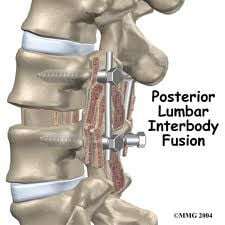In many cases, spinal fusion surgery is a necessity, but this is not always the case. While spinal fusion surgery can help people suffering from several conditions and is a general procedure, it may not always be the only option. There are alternatives to getting a spinal fusion surgery. These alternatives need to be readily available because spinal fusion surgery is not always what is best for everyone. It is vital to make sure that the decision you make for your health is best for you, both in the present and many years down the line.
What is spinal fusion surgery?
Spinal fusion surgery is a standard procedure that can be recommended by your doctor for many different reasons. Some of the most common are for lumbar spinal stenosis with spondylolisthesis and cervical stenosis. This is especially true for cervical stenosis, for which spinal fusion is a widespread solution. Thus, anterior cervical discectomy and fusion have become the most common spinal fusion procedure in the country.
This is usually done to treat pinched nerve roots or pinched spinal cord. Although this is a standard solution for this issue, in some cases, the patients do not need the procedure. This is especially true of younger patients. In fact, receiving this operation when you are young can lead to further health problems in these areas when you get older. This is because undergoing a cervical spinal fusion may be correlated with experiencing accelerated degeneration of the joints above or below the area where the fusion took place.
This means that the longer you live after having your operation, the higher your chance is to experience related health problems in the future. Experiencing this can lead to other health issues such as suffering from chronic pain of the neck or back. There is also the rare possibility that another joint will require an operation and trigger the same negative physical response in the next joint as well, creating a domino effect that can leave a person in a great deal of pain.
Again, this is quite rare, but it is not an impossible outcome and is something that people may want to account for. Furthermore, spinal fusion may not be the best option for people suffering from medical issues involving multiple discs or joints. In these cases, a patient would have to undergo a multilevel fusion. This would result in a decrease in functionality for the normal biomechanics of your spine.
A multilevel fusion also will put significantly increased stress on the remaining discs and joints, specifically the ones adjacent, which can lead a person to have additional adverse effects later in life. A person is at risk of having the previously stated domino effect where a procedure to fix one joint or disc may harm another later in life, requiring surgery for that one as well, leaving a person in a long cycle of chronic pain and slowly decreasing spinal function.
Alternatives to spinal fusion
Although spinal fusion surgery is the most common treatment method for conditions of this nature, there are alternatives that a person can consider. One such alternative that can help a person avoid many of the aforementioned adverse side effects that they are at risk of is to undergo an artificial disc replacement.
An artificial cervical disc replacement surgery, which also may be called a cervical disc arthroplasty, allows for the removal of a person’s disc with the associated herniation, bone spurs, and decompression of the pinched nerves. But in this case, instead of the bones being fused, the disc is swapped out with an artificial one. This means that a person will be able to maintain their range of motion at the level treated.
This reduces the risk of chronic pain and adjacent segment disease that a fusion surgery could lead to. This treatment is most appropriate for younger patients because they are at the highest risk for the development of adverse side effects related to a spinal fusion procedure later on in life. It is currently only FDA approved for a single level operation, meaning that people who are suffering from a multilevel disc and joint-related health issues may not be able to get this procedure done for them, but this is not the only spinal fusion alternative available.
Another excellent treatment used when dealing with medical problems related to the cervical spine is a cervical laminoplasty. This procedure involves the reconstruction of the posterior cervical spine bones, which can dramatically increase the size of the spinal canal. In these situations, spinal joints are not immobilized, and spacers are put into the area, which can allow the nerves more room. This technique can be very useful for people who are suffering from multilevel disease and can benefit a person’s overall health in the short and long term.
In some cases, minimally invasive lumbar surgery can also be the best option for someone. This allows for someone to get the treatment they need, but without undergoing spinal fusion or some of the other adverse effects that can be associated with spinal fusion surgery. Fusing the spine during surgery stabilizes it, but doing so has its drawbacks. By using a minimally invasive method instead, the range does not need to be stabilized for surgery, allowing a person not to have to worry about many of the adverse effects of spinal fusion such as loss of strength or range of motion in the afflicted area. This procedure can give patients comparable outcomes to spinal fusion, but without many of the adverse side effects.
Additional solution would be to explore stem cell therapy to recover the damaged disc. Although still experimental, many clinics are now offering stem cell therapy as an alternative to actual fusion. The most potent and successful clinics use mesenchymal stem cells taken from umbilical cord tissue. Not offered in the United States at a level potent enough to make a difference offshore facilities like Bioxcellerator have become the popular solution. We have successfully seen discs regenerate and completely remove the option for surgery.
Spinal fusion is a surgery that risks leaving patients in pain or needing the procedure again in the future. For people who are not willing to take these risks, such as younger people or those suffering from multiple medical conditions, they now have alternatives that can lead to them getting better care and having a better quality of life after. Reach out and discuss your options with a patient advocate today.


